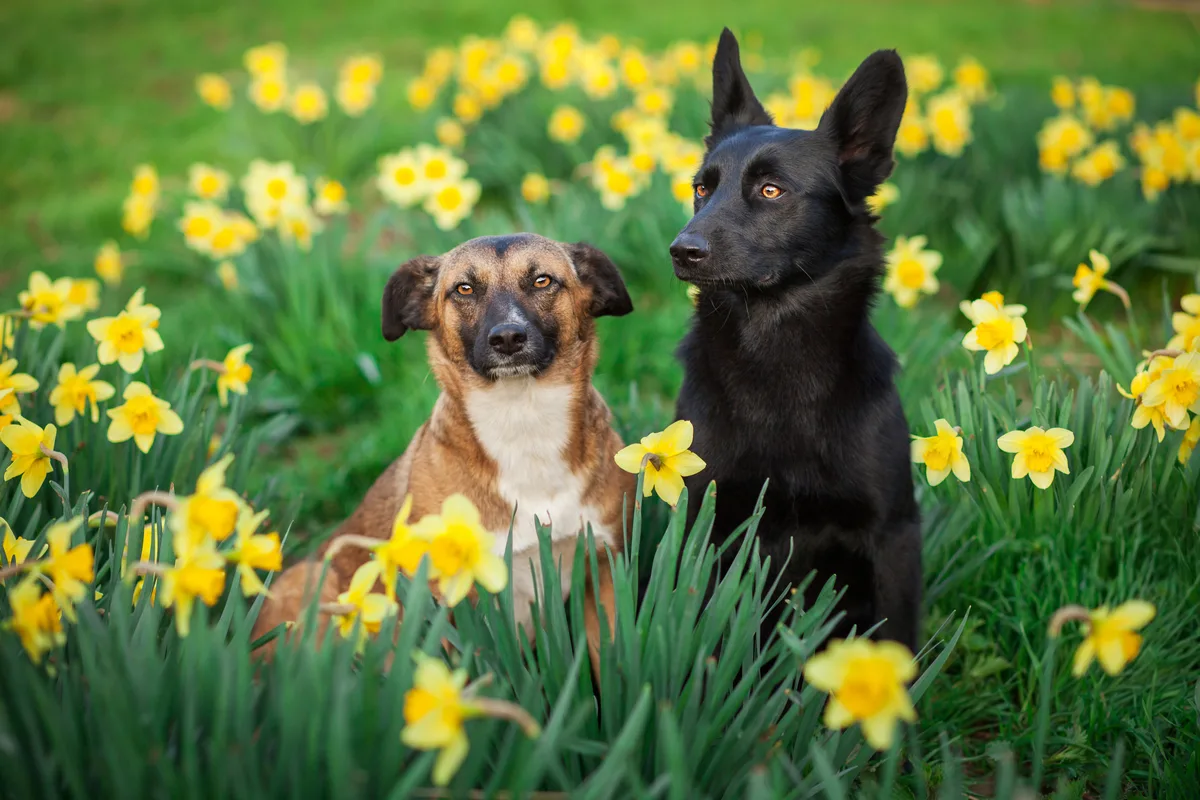
We love our furry and feathery kids (or as some people call them, pets). We’d do anything to keep them safe, happy, and healthy.
But sometimes, especially when it comes to gardeners, our homes are filled with things that can harm them. We may not even be aware of it.
Whether they’re indoor plants, a beautiful bouquet for your anniversary, or your flowering garden bed, some flowering plants could pose a threat to your pets. Cats, dogs, and even birds tend to nibble on things they shouldn’t.
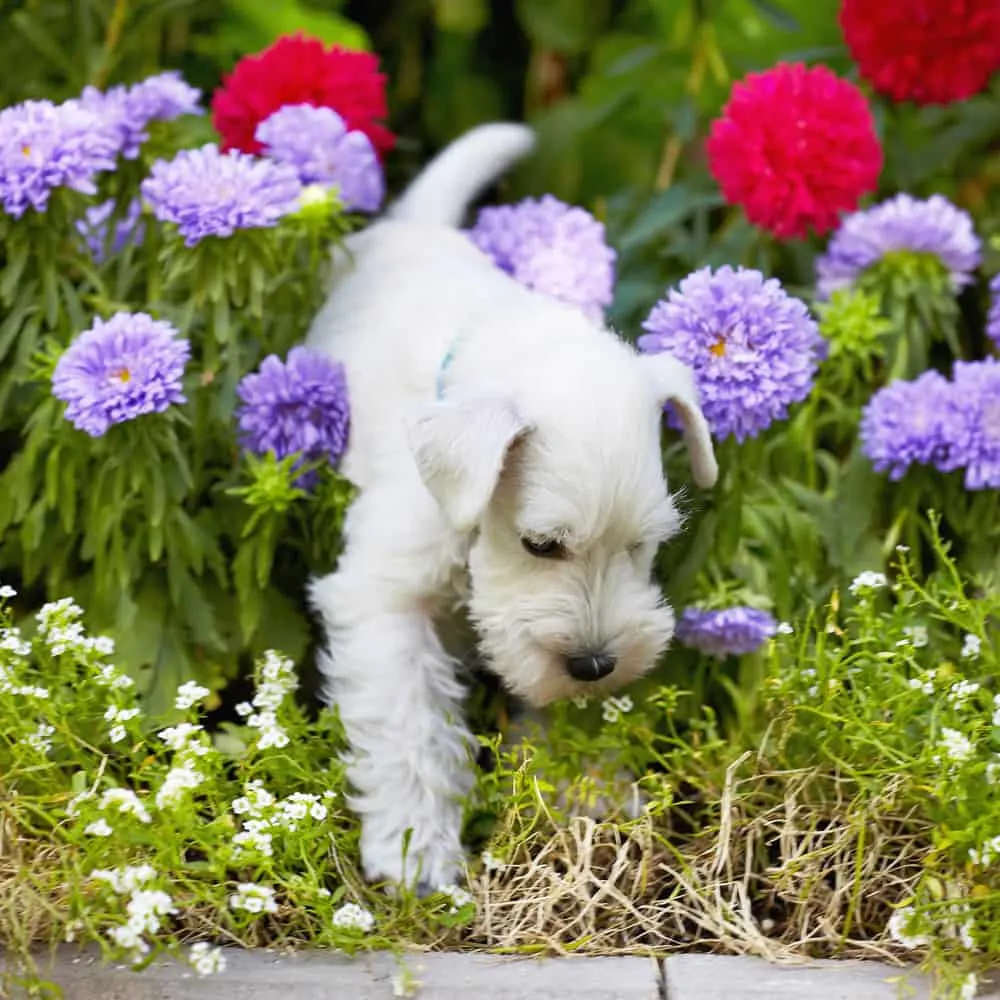
If you have a curious pet, it’s best to avoid these ten flowering plants.
1. Amaryllis
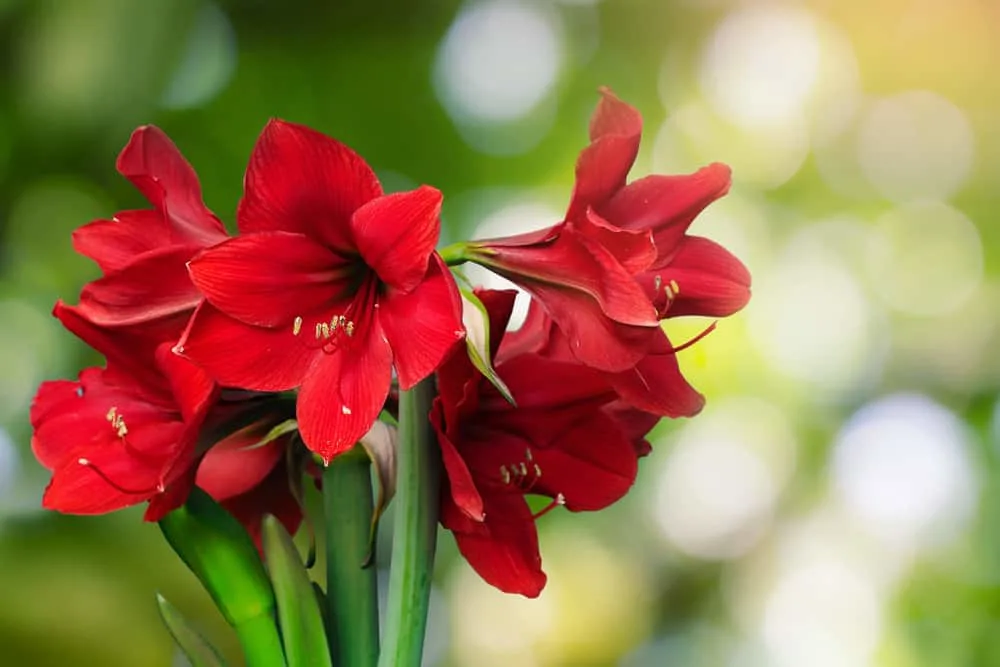
Amaryllis is a flowering houseplant favorite. With its striking lily-like flowers and interesting leaves, amaryllis brightens any room during winter.
Unfortunately, this stunning flower is also toxic to your pets. In fact, it’s toxic to all animals. The bulbs, leaves, and stem contain phenanthridine alkaloids, which causes the adverse reaction in your pets.
If your pet ingests any part of amaryllis, they could vomit or salivate excessively. Large amounts could cause diarrhea and shaking. Other symptoms include a sore stomach and a drop in blood pressure.
Never keep it around your pet rabbit or gerbil, as the effects are particularly damaging. And, if you have a wandering cat or dog, keep amaryllis out of your home and garden.
2. Daffodils
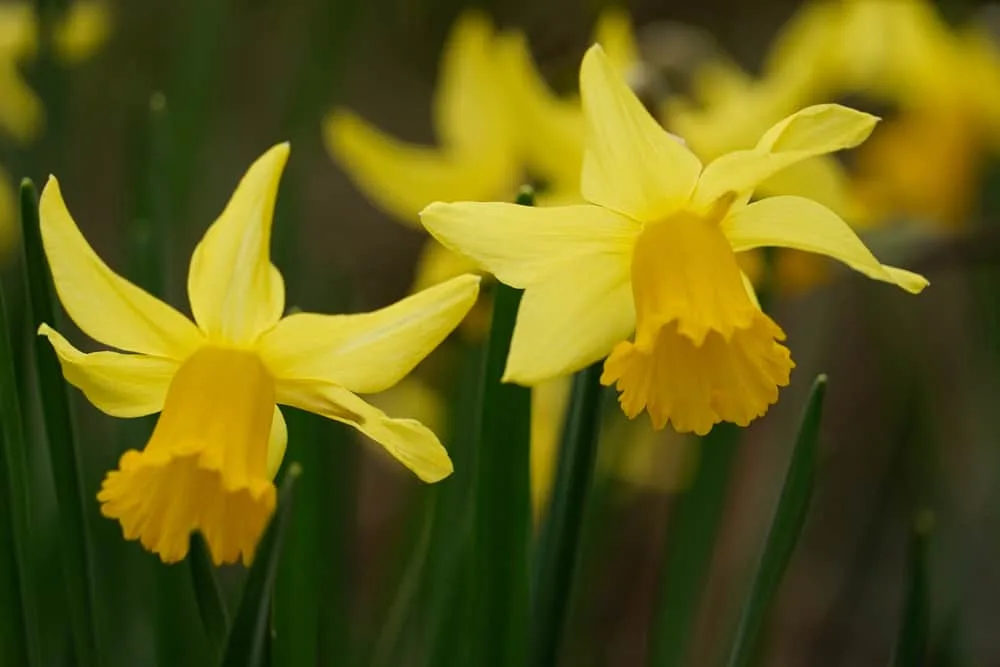
Daffodils are another stunning plant common in homes and gardens. Your pet rabbit could happily nibble on it and be fine. But your bird, cat, or dog may be at risk.
Daffodils contain lycorine, an alkaloid. Other toxins such as glycosides are also found in daffodils. These toxins are present in all parts of the plant and are concentrated in the bulb. This could spell bad news for dogs who love to dig up garden beds.
Daffodil poisoning in pets causes severe diarrhea, tremors, drooling and vomiting. Cats and birds sometimes experience seizures. If excessive amounts are ingested by birds, which would depend on the type and size of your feathery friend, it could result in death. Cats can also experience heart arrhythmia and trouble breathing. In milder cases, dogs may experience ‘daffodil itch’, a reaction caused by coming into contact with the plant’s sap.
Dogs often recover in a few days. But, always monitor symptoms if you think they’ve munched on anything they shouldn’t have.
3. Lilies
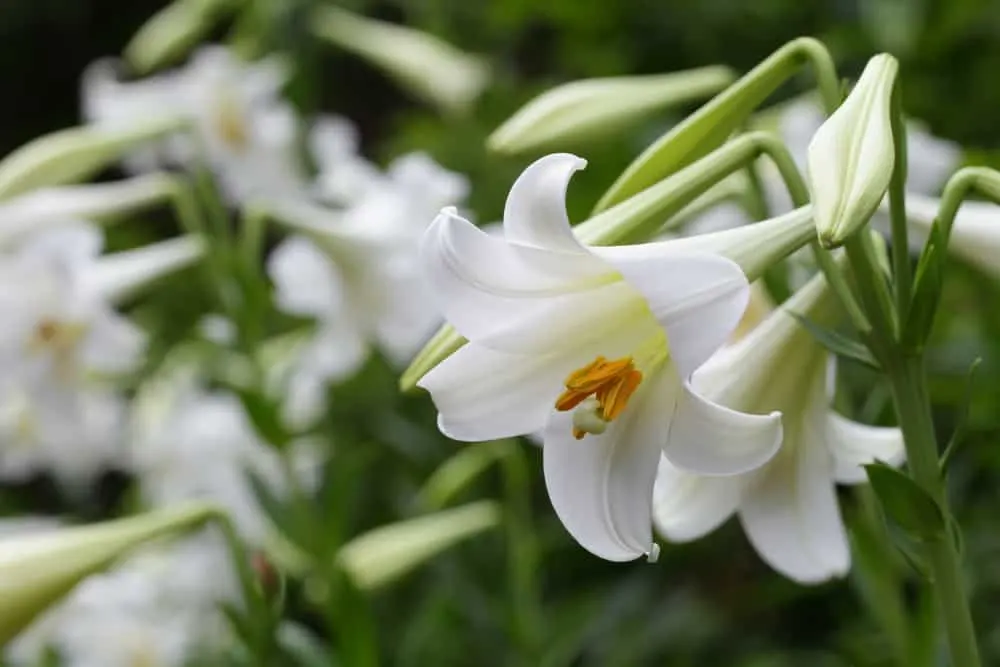
In a bouquet or as a stand-alone feature in a garden, lilies are always striking. But, as stunning as they are, they unfortunately need to be kept be far away from pets.
All lilies tend to have adverse effects on pets, especially birds and cats. All parts of the plant, including the pollen and even the water inside the vase, are toxic to animals.
Depending on the type of lily ingested, the effects may differ.
All lilies irritate the mouth and digestive tract of cats, dogs, and birds, and should be kept out of your home. You’ll know if your furry friend has nibbled on a lily if their lips are swollen and they’re pawing at their face. They could also be nauseous and vomiting.
Some lily types are far more dangerous. Easter lilies and Tiger lilies should be avoided at all costs, especially by cat owners. Exposure to any part of these plants could cause sudden kidney failure in cats.
4. Morning Glory

Morning glory tends to be the first vine challenge gardeners attempt, next to ivy (which is also toxic to pets, by the way). Grown for their vibrant colors that attract hummingbirds and butterflies, they’re a great addition to gardens.
Unfortunately, they’re a no-go for cats, dogs, and birds. This plant contains chemicals called lysergic alkaloids. These cause vomiting, tremors, dilated pupils, and even liver failure in pets. Horses should also steer clear of morning glory.
Lysergic alkaloids are similar to chemicals found in LSD and they’re most concentrated in morning glory seeds. If your bird, or even cat or dog, munch on these seeds they could experience hallucinations, causing confusion and lethargy.
As stunning as they are, it might be best to steer clear of morning glory in your garden.
5. Poinsettia
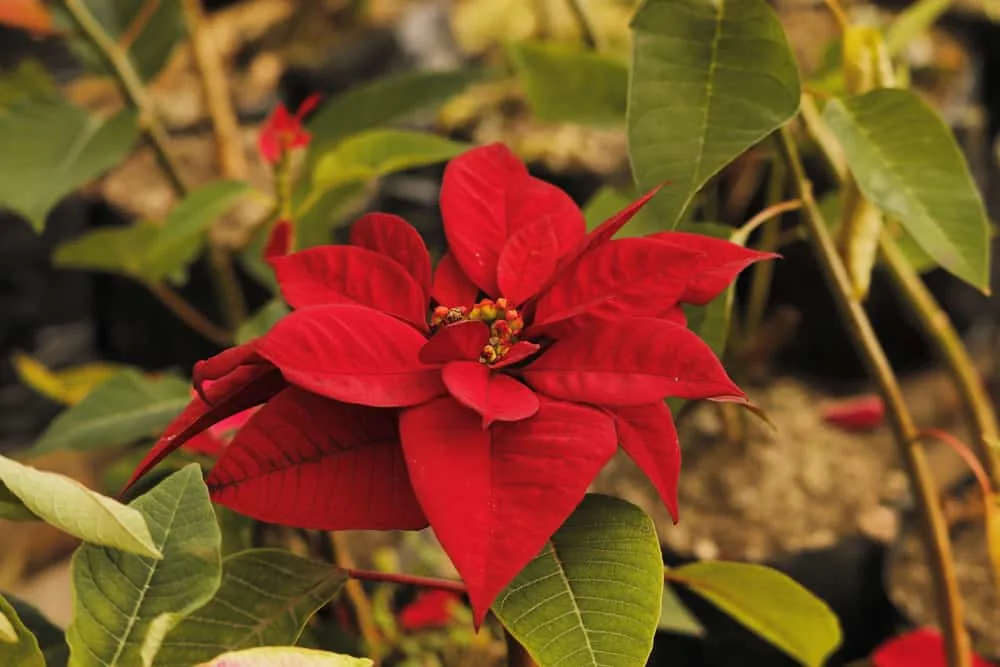
Poinsettia is one of the best holiday season plants. Its deep red hybrid blooms mixed with dark green leaves truly bring on the festive cheer. While they’re not as toxic as other plants, poinsettias can still cause mild irritations in certain pets.
Cats and dogs may experience mild vomiting and drool after ingesting the plant’s sap. This milky sap has chemicals, diterpenoid euphorbol esters, that cause these adverse effects. If your cat or dog gets this sap on its skin, it could become inflamed and itchy. Severe poinsettia poisoning is rare in cats and dogs, but birds are affected more severely.
Some claim that the extent of toxicity of poinsettias is over-exaggerated, and luckily the effects on some pets are only mild. But it’s still a good idea to keep your pets away from this decorative festive plant – just in case.
6. Azalea
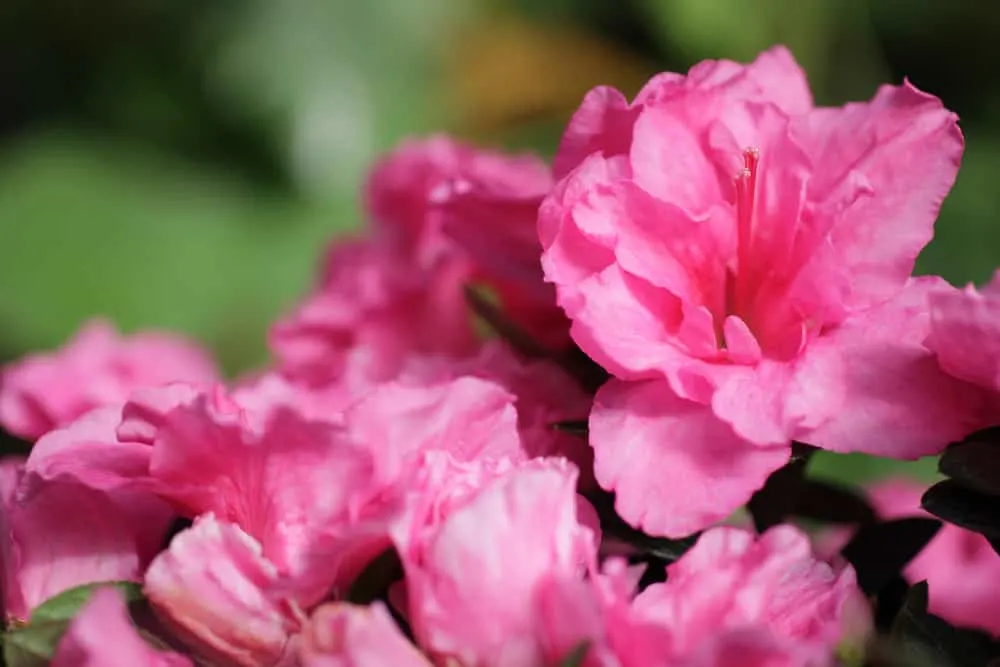
Azaleas or any member of the Rhododendron family are toxic to pets. Disappointing, I know, because they’re a sight to behold come blooming season. The bitterness of the plant usually deters pets from munching excessively, and its effects on some pets are only mild. But, if you have horses or any other livestock on your property, azaleas could spell trouble.
All parts of the plant are poisonous, containing toxins called grayanotoxins. These toxins aren’t only toxic to animals, but humans too.
Azalea poisoning symptoms in cats and dogs are similar to those mentioned previously: excessive drooling, vomiting, and diarrhea. If they’re unphased by the bitterness of azaleas, their symptoms could be a lot worse. Look out for tremors, seizures, and a loss of appetite.
Livestock and especially horses on the other hand experience far more dangerous symptoms and side effects. Grayanotoxins can cause cardiac arrest in horses, loss of appetite, and seizures. Symptoms can appear in just a few minutes. You’ll likely notice a frothy saliva pooling in your horse’s mouth and muscle weakness.
Azaleas are undoubtedly high on the list of no-go plants when it comes to animals.
7. Chrysanthemum
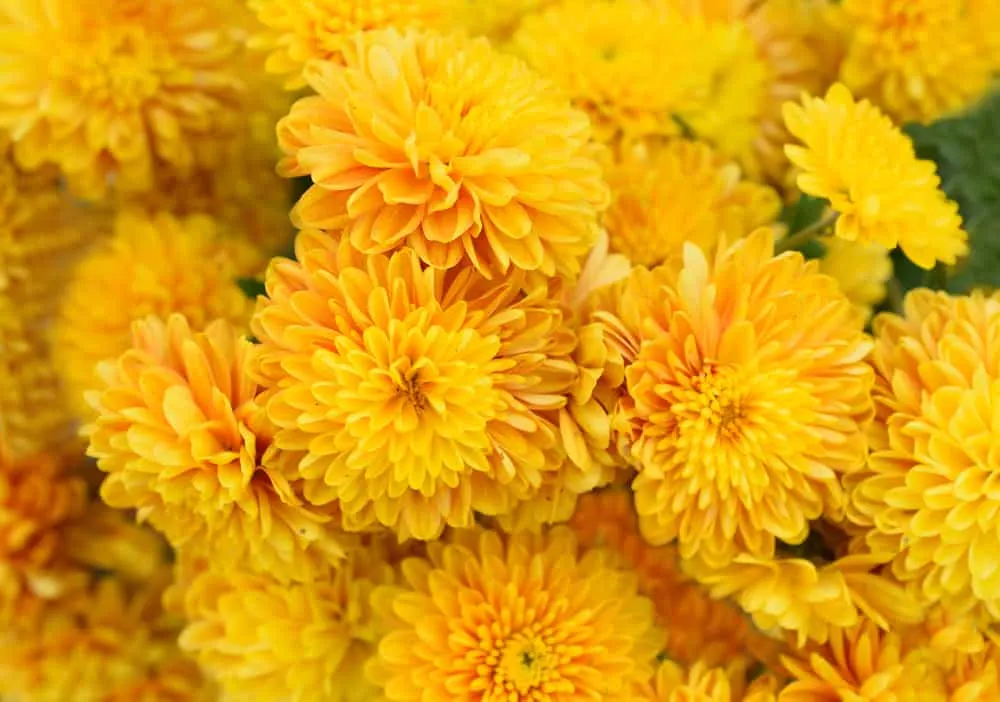
Another flowering beauty that’s a disappointment on this list is chrysanthemums. These plants are toxic to cats, dogs, rabbits, and many other animals.
The leaves and stems contain pyrethrins which cause vomiting, diarrhea, drooling, and sometimes a loss in appetite if ingested.
Interestingly, pyrethrins are a common ingredient in tick and flea treatments for dogs and other insecticides. Always double-check the ingredients of pest deterrent sprays before you use them, especially indoors, to ensure they don’t cause any unintended harm.
8. Hydrangea
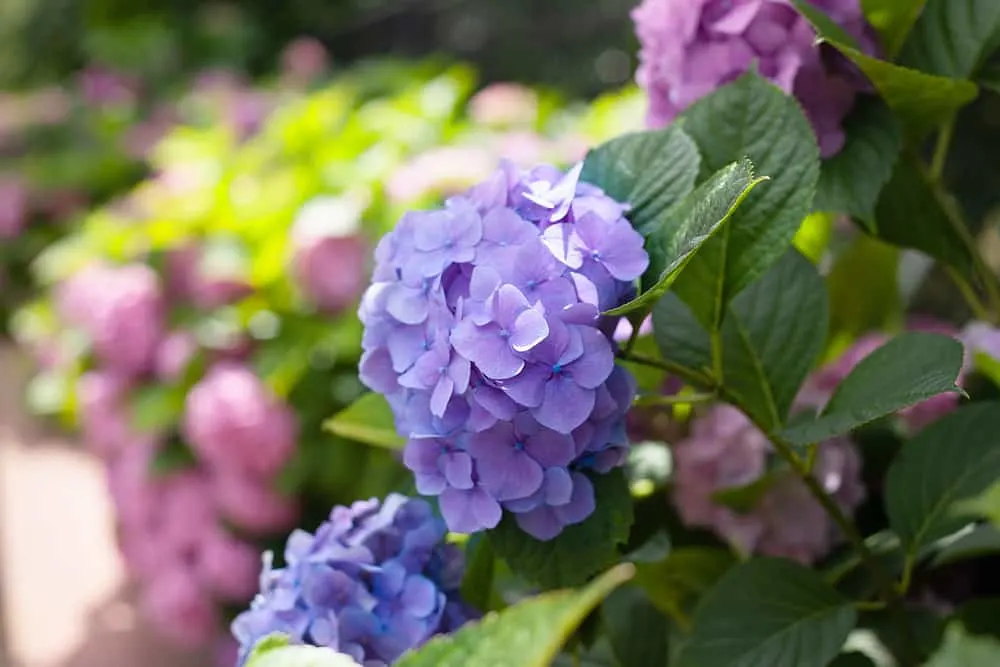
Hydrangeas are one of the most common garden plants and cut flowers in homes. The variety of bright colors add life to any space, indoors and out. Unfortunately, as much as we love them, they shouldn’t be near curious pets.
Hydrangeas aren’t highly poisonous to some pets, like cats and dogs, but smaller pets can become severely ill if they nibble on the plant. Hydrangeas contain cyanogenic glycoside, which causes vomiting, diarrhea, and difficulty breathing for several pets.
Cats could become depressed, experience seizures and stiffness. Dogs on the other hand could lose their appetite, become fatigued, and may even experience a fever.
Smaller mammals and pets, like birds and rabbits, experience similar symptoms but their size is a point of concern. Even a small bit of ingested hydrangea could cause severe symptoms in your small pet.
Unlike lilies, you can still grow hydrangeas in your garden or have them in your home. But make sure your pet can’t snack on a leaf, stem, or flower.
9. Tulips
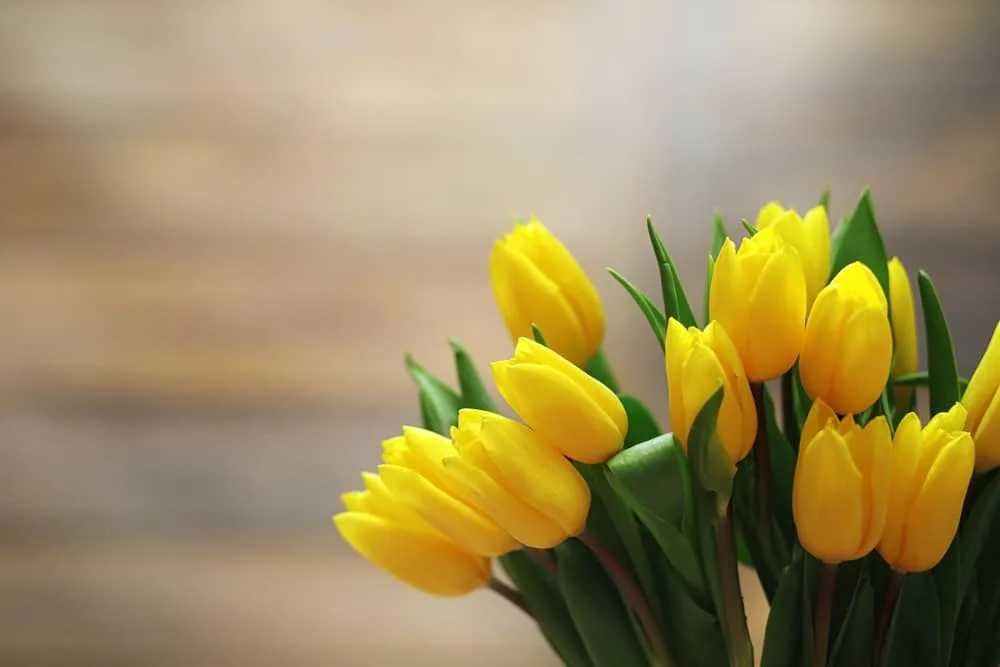
Although technically a part of the Lily plant family, the popularity of tulips and their potential danger to your pets earn them their own place on this list.
Tulips are one of the most dangerous flowers for pets to ingest. No matter their size or the number of legs your animals have, tulips are highly toxic. Tulips contain toxic lactones and alkaloids that are concentrated in the bulb. If your pet eats any part of the plant, especially the flower, they’ll experience a variety of symptoms, including, diarrhea, nausea, vomiting, and excessive drooling.
Dogs could experience seizures, tremors, dizziness, and even death. Tulip poisoning can cause death in birds, rabbits, and other smaller pets too.
Horses may experience different symptoms, including colic, increased heart rate, and even jaundice.
As sad as it is, you may need to avoid planting tulips in your garden. They may look pretty in a vase, but give them a skip when you go to the florist to be safe.
10. Marigolds
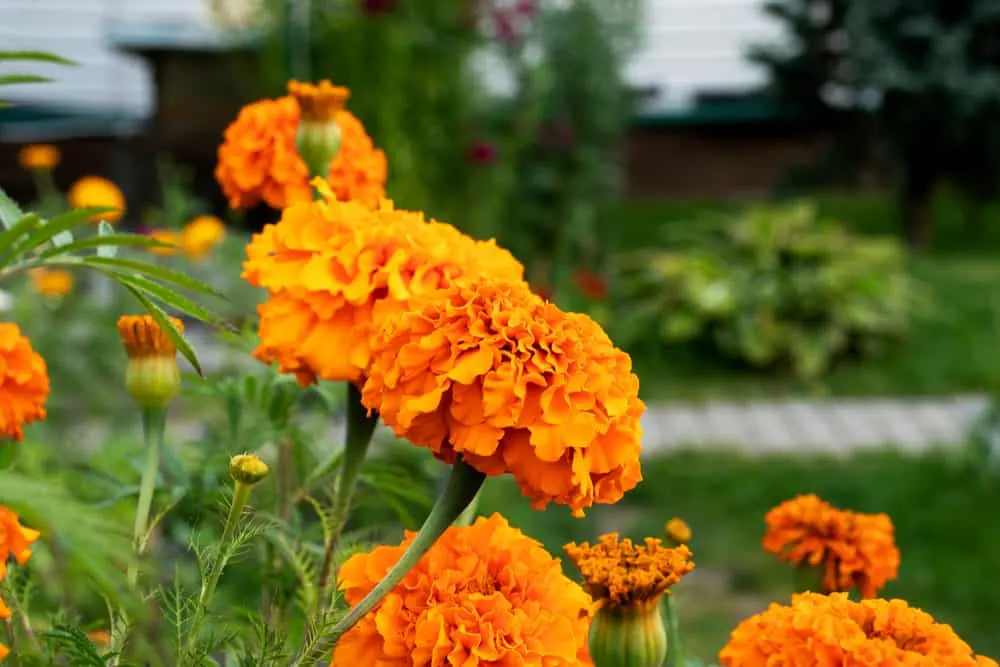
Marigolds are a favorite companion plant for many gardeners. The bright yellows and oranges attract bees and other beneficial insects to your garden. But they can affect some pets negatively.
If cats nibble on leaves they could get a sore stomach and an irritated mouth. They’ll also experience drooling and diarrhea. Marigold sap will also irritate your cat’s skin.
Marigolds are safer around dogs, but the sap can irritate their skin too, especially if you have a dog with sensitive skin.
Other than possible skin irritation, marigolds are generally considered safe for most pets. However, if you have cats, it’s best to keep them away from your marigold bush.
It’s always good to know what plants could cause harm to our furry and feathery family members. Some flowering plants aren’t as toxic as others, but it’s always better to be safe than sorry. If you suspect your pet has ingested a harmful plant or substance, seek medical attention immediately.
